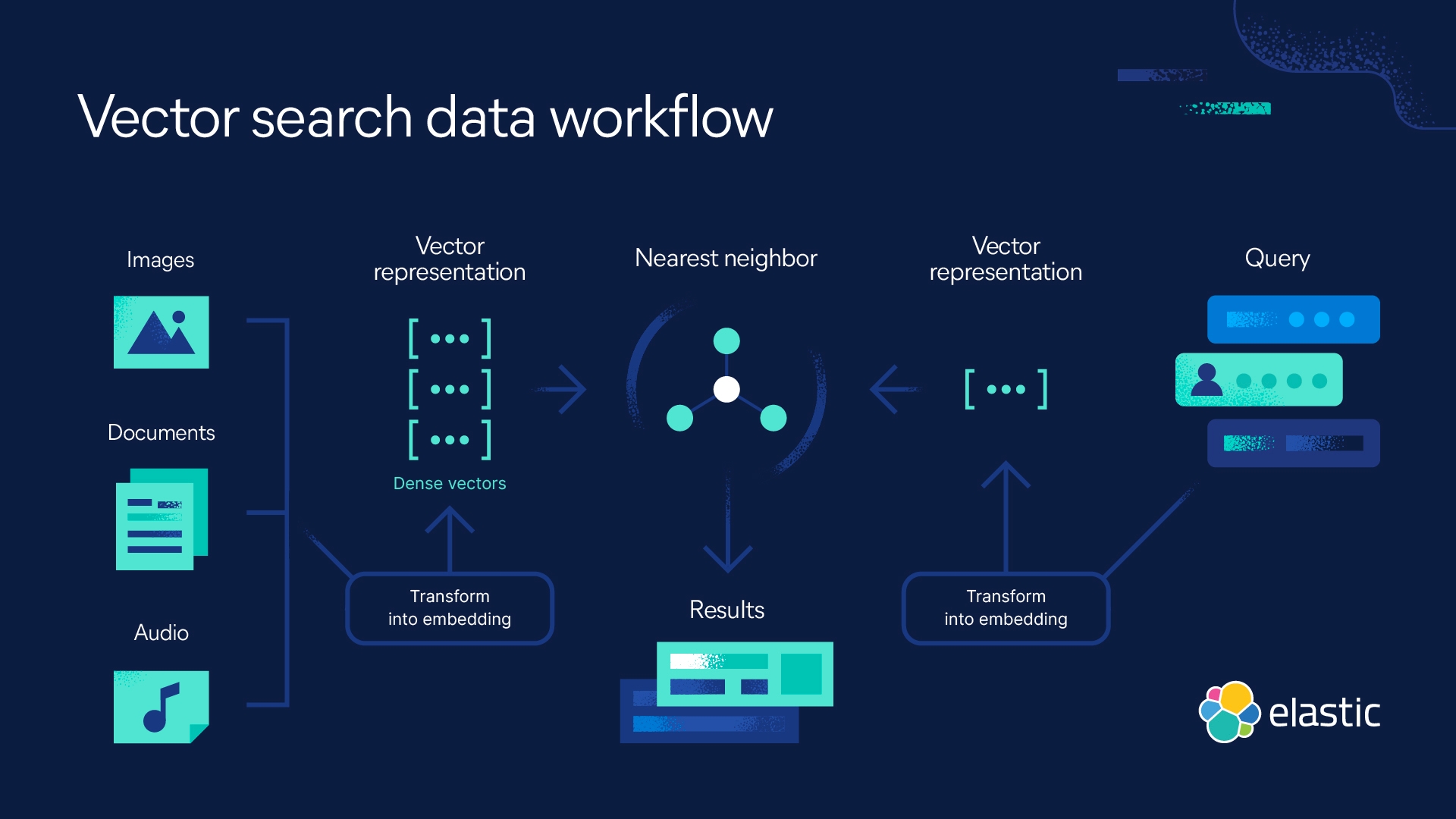定义
什么是向量搜索?
向量搜索可利用机器学习 (ML) 来捕获非结构化数据(包括文本和图像)的含义和上下文,并将其转换为数字化表示形式。向量搜索常用于语义搜索,通过利用相似最近邻 (ANN) 算法来找到相似数据。与传统的关键字搜索相比,向量搜索产生的结果相关度更高,执行速度也更快。

为什么向量搜索很重要?
您遇到过多少次想要查找某个东西却不确定它叫什么的情况?您或许知道它的用途,又或者知道怎么描述它。但如果没有关键字,您就只能大海捞针似的搜索了。
向量搜索克服了这一限制,可让您按照自己的意思进行搜索。它可以根据相似度搜索快速为查询提供答案。这是因为向量嵌入除了捕获文本之外,还能捕获非结构化数据,如视频、图像和音频。您可以将向量搜索与筛选和聚合相结合,通过实现混合搜索并将其与传统评分相结合来优化相关性,从而增强搜索体验。
如何开始体验
借助 Elastic 轻松应用向量搜索和自然语言处理 (NLP)
实施向量搜索和应用自然语言处理 (NLP) 模型并非困难重重。有了 Elasticsearch Relevance Engine™ (ESRE),您便可获得一个工具包,用于构建可与生成式 AI 和大型语言模型 (LLM) 搭配使用的 AI 搜索应用程序。
使用 ESRE,您可以构建富有创意的搜索应用程序,生成嵌入,存储和搜索向量,以及通过 Elastic 的 Learned Sparse Encoder 实现语义搜索。了解有关如何将 Elasticsearch 用作向量数据库的更多信息,或尝试此自定进度的向量搜索实践学习。

